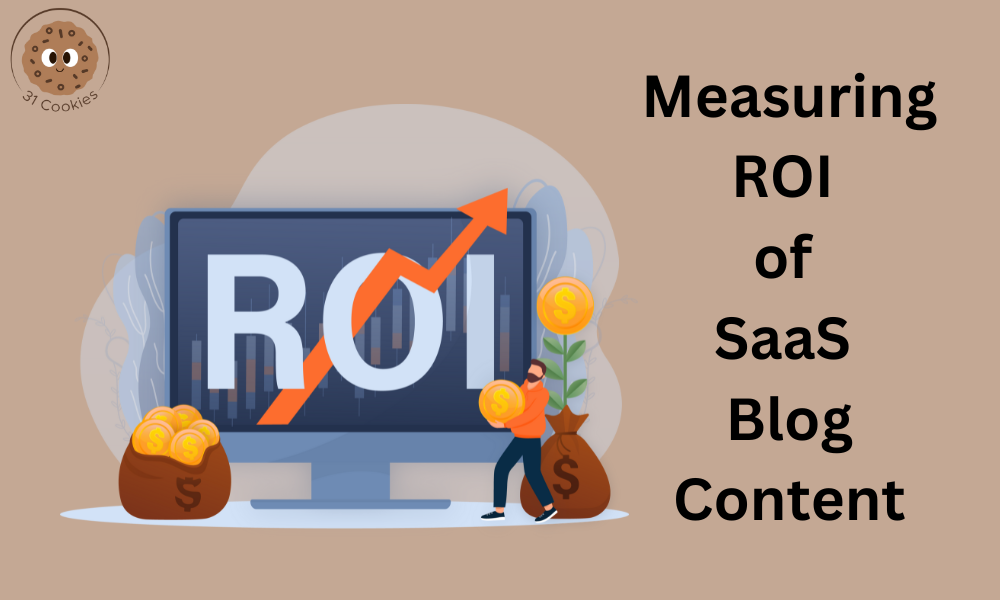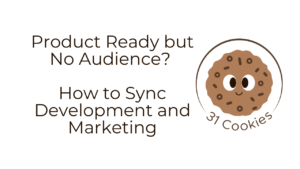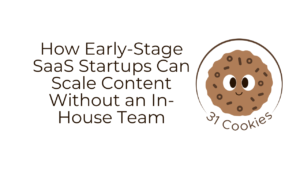If you’re investing time and resources into your SaaS blog, you’ve probably wondered—‘Is all this effort actually paying off?’
Blog content plays a crucial role in driving traffic, generating leads, and supporting customer retention, but without clear metrics, it’s hard to know if you’re getting real business value. Unlike paid ads with direct conversion tracking, content ROI can be more nuanced, requiring a mix of analytics, attribution models, and long-term performance evaluation.
Let’s break it down step by step—how to measure, interpret, and optimize the ROI of your SaaS blog so that every article contributes to your bottom line.
Defining ROI in the Context of SaaS Blog Content
SaaS content marketing isn’t just about writing blog posts and hoping for the best. Every piece of content should contribute to your bottom line—whether it’s increasing sign-ups, driving organic traffic, or nurturing leads.
Measuring the ROI (Return on Investment) of SaaS blog content means evaluating how well your blog efforts contribute to your business goals compared to the cost of creating and promoting it.
It’s about figuring out if your blog is helping your SaaS business grow. You want to ensure your content isn’t just attracting readers but actually helping to:
- Generate qualified leads
- Reduce customer acquisition costs (CAC)
- Increase customer lifetime value (CLTV)
- Support overall revenue goals
You wouldn’t invest in a marketing campaign without tracking results, right? The same logic applies to your blog. Measuring ROI helps you:
- Make data-driven decisions
- Show stakeholders the value of content marketing
- Focus on what’s working (and ditch what’s not)
- Continuously improve your content strategy for better business impact
What defines blog content ROI?
Your content delivers value in many ways, from boosting website traffic to building long-term customer relationships. A successful blog can:
- Increase organic traffic by ranking higher in search engines
- Generate leads through gated content downloads and newsletter sign-ups
- Establish brand authority, positioning your company as a trusted leader
- Improve customer retention with educational content that reduces churn
Establishing Clear Goals and Objectives
Before you can measure the success of your blog, you need to define what success looks like. It’s easy to get caught up in creating content, but without clear goals, it’s hard to know if your efforts are actually paying off. So, ask yourself—What do I want my blog to achieve?
Goals should be specific, measurable, and tied to outcomes that truly impact your business. Instead of vague aspirations like ‘increase traffic’ or ‘get more sign-ups,’ set targets that give you a clear benchmark for success. For example:
- Increase organic traffic by 20% in 6 months
- Generate 200 new leads per month from blog content
- Improve sign-up conversion rates from 2% to 4%
Aligning your blog strategy with business objectives ensures that your content isn’t just generating traffic, but contributing to meaningful business outcomes.
For instance, if your goal is to increase monthly recurring revenue (MRR), your blog should focus on attracting high-intent leads who are more likely to convert into paying customers. Likewise, if reducing customer churn is a priority, your blog should provide educational content that helps users maximize the value of your product.
Setting clear goals from the start helps you stay focused, track progress effectively, and ultimately measure the true ROI of your efforts.
Identifying Key Performance Indicators (KPIs)
Once you’ve set clear goals for your blog, the next step is figuring out how to measure success. This is where key performance indicators (KPIs) come in. Tracking the right KPIs helps you understand what’s working, what’s not, and where to focus your efforts for better results. Here’s what to measure:
1. Traffic metrics
These KPIs show how well your content attracts visitors:
- Page views: Tracks how often blog pages are viewed, indicating reach and visibility
- Unique visitors Measures how many potential customers your content reaches
- Referral sources: Identifies where traffic comes from (organic search, social media, email), helping you optimize high-performing channels
2. Engagement metrics
Visitor numbers don’t matter if they don’t engage with your content:
- Average time on page: A higher time suggests valuable content; a low time may indicate weak relevance
- Bounce rate: High bounce rates suggest content isn’t engaging or relevant enough
- Social shares & comments: Strong indicators of audience interest and discussion
3. Conversion metrics
The ultimate goal is turning visitors into leads and customers:
- Lead generation: Tracks sign-ups, form submissions, and downloads
- Trial sign-ups: Measures how well content drives product interest
- Customer acquisition: Directly links blog-driven traffic to revenue growth
Tools and Methods for Tracking Performance
Now that you know which KPIs to track, the next step is figuring out how to measure them effectively. Tracking blog performance isn’t just about gathering data—it’s about using the right tools and methods to turn that data into actionable insights. Let’s look at a few essential tools and techniques that can help you stay on top of your blog’s performance.
- Google Analytics: Tracks website traffic, user behavior, and content performance, giving you insights into how visitors interact with your blog
- Turtl Analytics: Offers in-depth insights into content performance, helping you understand engagement and reader behavior at a granular level
- HubSpot: Provides detailed analytics and custom dashboards to track blog performance across the customer journey
- ClickUp Dashboards: Allows you to track content performance alongside broader marketing goals with customizable reports and real-time data
- SEO Platforms (Ahrefs, SEMrush): Helps you measure organic traffic, keyword rankings, and backlinks to optimize blog content for search engines
To get the most out of these tools, set up proper tracking mechanisms, such as:
- UTM (Urchin Tracking Module) parameters: Add tracking codes to blog URLs to identify traffic sources and measure campaign success
- Event tracking: Use tools like Google Tag Manager to track downloads, form submissions, and button clicks
- Heatmaps and session recordings: Analyze user interactions with tools like Hotjar or Crazy Egg to improve layout and engagement
Calculating the ROI of Blog Content
So, how do you know if your blog is actually driving growth for your SaaS business? The key is to calculate your content marketing ROI using a simple formula:
ROI (%) = [(Revenue from blog conversions – Content costs) / Content costs] × 100
To measure profitability, account for all expenses:
- Writer salaries
- SEO tools and keyword research
- Content promotion (ads, social media)
- Design and development
Every conversion should have a dollar value. Let’s break it down:
- If a trial sign-up is worth $50 and your blog generates 100 sign-ups, that’s $5,000 in value
- If 10% of those trial users become paying customers, and each customer has a lifetime value of $500, the blog-driven revenue jumps to $5,000 from just 10 paying customers
💡 Pro Tip: Calculate the average cost per blog by dividing total content expenses by the number of posts produced. Compare this to the revenue generated to determine if your blog is a revenue driver or just an expense.
Tracking Organic Traffic to Measure Blog Success
Organic traffic is one of the best indicators of your blog’s effectiveness. More traffic means more visibility, but to truly measure success, you need to look beyond just page views. Here’s how to assess the impact of your content:
- SERP rankings: Use tools like Google Search Console or Ahrefs to monitor keyword performance. If a blog ranks on page two, refresh it with better content, keywords, and internal links to improve visibility
- Leads from content: Track sign-ups, demo requests, and downloads using UTM parameters. If a post gets 5,000 visits but only 10 sign-ups (0.2% conversion rate), compare it to other posts to identify high-performing content
- Lead quality: Not all leads convert. Assess engagement by tracking email opens, demo requests, and sales interactions. Leads from educational content may be in the awareness stage, while product-focused posts often attract high-intent buyers
Challenges in Measuring Content ROI
Measuring the ROI of blog content isn’t straightforward, especially for SaaS. Unlike direct-response marketing, where results are immediate, content marketing works in layers, making attribution complex. Here’s why:
1. The Fuzzy nature of blog ROI
Not every blog-driven conversion follows a clear path. A post may get hundreds of social shares, leading to thousands of new views. Some of those visitors subscribe to your email list, and weeks later, a portion converts into paying customers.
Did the blog post drive revenue? Yes—but quantifying its exact impact is tricky.
To measure ROI accurately, you need both direct (sign-ups, downloads) and indirect (brand awareness, assisted conversions) metrics.
2. Attribution difficulties
SaaS customer journeys are rarely linear, making it hard to trace the exact influence of a single blog post. For example:
- A visitor might read a how-to guide, then come back later after seeing a social media ad
- They could download an ebook, attend a webinar, and only then request a demo
This multi-touch process complicates attribution. Multi-touch attribution refers to assigning credit to multiple touchpoints along the buyer’s journey rather than just one, like a blog post or ad.
Models like first-touch (crediting the first interaction), last-touch (crediting the final action before conversion), and multi-touch (distributing credit across several interactions) help track this, but they often don’t fully capture how content, particularly blog posts, influences customer decisions throughout their journey.
3. Long sales cycles in SaaS
Unlike e-commerce, where purchases happen instantly, SaaS decisions take time. Consider these scenarios:
- A potential customer reads a blog post today but only decides to convert six months later after internal budget reviews and discussions with stakeholders
- Customers may compare several solutions before committing, with your content playing an important role in educating and influencing their decision, even though the actual purchase happens much later
These lengthy sales cycles make it hard to measure the direct impact of a single piece of content, especially when it may have influenced the decision far in advance.
💡 Pro Tip: Use tagged links and dedicated landing pages to track visitor sources. Set up unique phone numbers for website visitors vs. print ad readers.
Case study: Zendesk’s use of embedded analytics
Zendesk, a customer service software provider, enhanced its content ROI by incorporating embedded analytics into its platform.This integration enabled Zendesk to offer customers actionable insights directly within their product, increasing user engagement and satisfaction.
As a result, they experienced a 30% increase in customer engagement and a 15% boost in upsell and cross-sell opportunities.
Turning Blog Actions into Growth
Measuring your SaaS blog’s ROI ensures it drives real business value. By setting goals, tracking key metrics, and optimizing based on data, you can maximize impact. Focus on the most impactful actions—social shares, comments, subscriptions, and purchases—and create a strategy that promotes sustainable growth.
As the landscape evolves, expect future trends like AI-driven analytics, improved attribution models, and a stronger emphasis on customer retention metrics to provide even more accurate insights into your content’s value.
At the end of the day, measuring blog ROI isn’t about chasing vanity metrics—it’s about aligning your content with business growth. So, take a step back, analyze the numbers, and fine-tune your strategy to make every blog post count.








